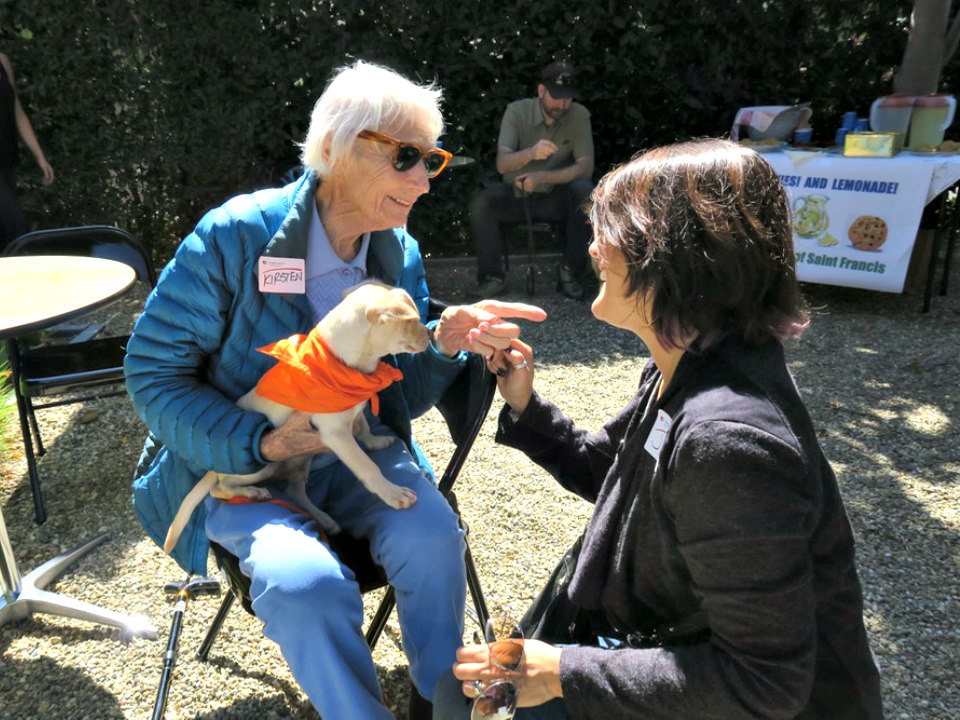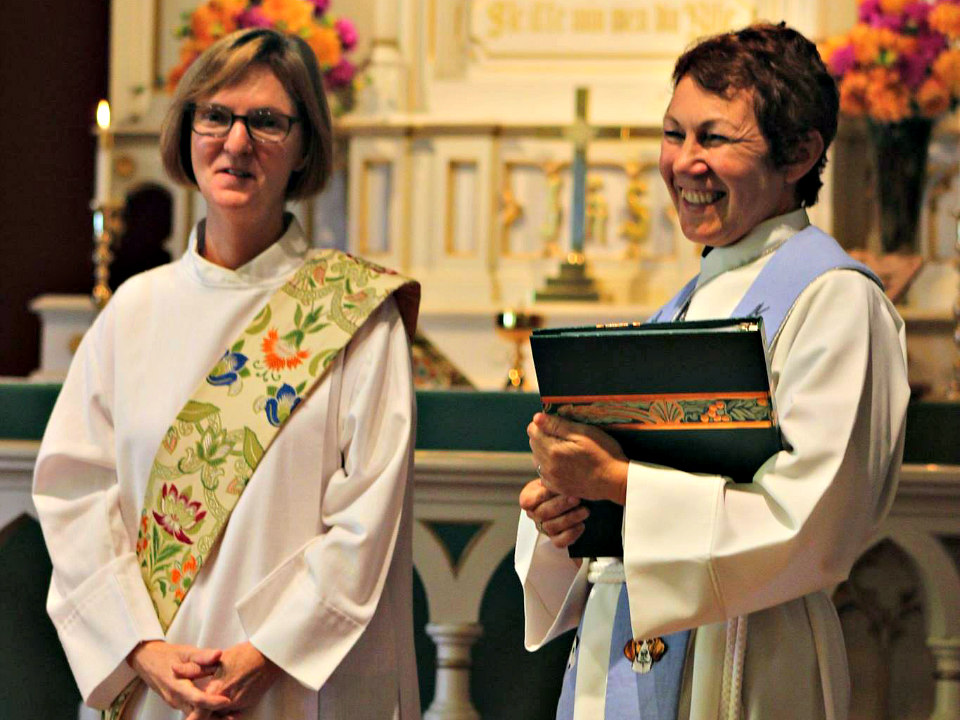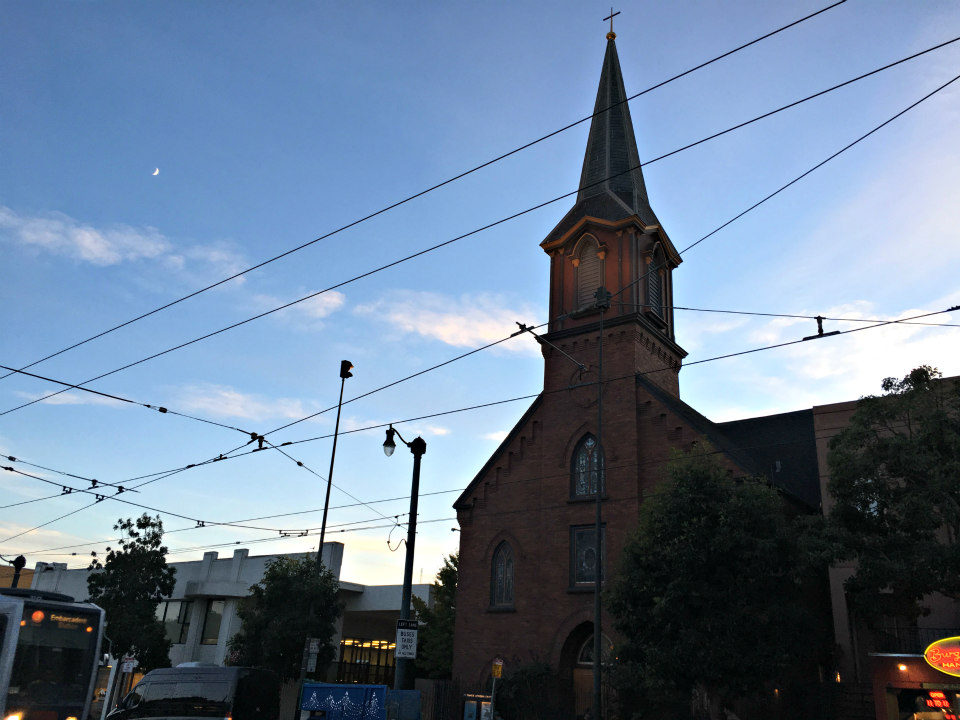
Kirsten Havrehed came to San Francisco from war-torn Denmark in 1948 when she was 21-years-old. After six weeks on a ship, the most overwhelming aspect of Havrehed’s new city wasn’t the people or the fog, it was the produce.
For five years during and after World War II, Havrehed’s family didn’t have access to much food, and she described the pyramid of oranges that she saw at Safeway as “shocking.”
Havrehed, who turns 90 next September, found Ansgar Danish Evangelical Lutheran Church in Duboce Triangle less of a culture shock: nearly everyone spoke her native tongue. According to Havrehed, even though she lived in the Richmond, the church welcomed her with open arms. That was 68 years ago. Today, Havrehed is the church’s longest tenured member and only remaining Danish speaker.

In the 1870s and 1880s, a large number of Scandinavian immigrants moved to San Francisco’s Duboce Triangle and Upper Market neighborhoods. The neighborhoods’ churches reflected the local Nordic population, and in 1903, some of the city’s Danish immigrants began to raise funds to construct a church at 152 Church St.
The majority of the building was completed by the time the 1906 earthquake struck on April 16th. The church miraculously dodged destruction; the fire that broke out following the quake was brought under control just two blocks away at Guerrero Street.
For the next many months, Ansgar Danish Evangelical Lutheran Church served as an infirmary and offered disaster relief to the surrounding neighborhood. On December 2, 1906, the church was completed and the sanctuary dedicated. Construction costs came in at $22,500. By 1926, the initial debt had been paid and the mortgage was burned.
Although the church modernized itself over the past century—it even has solar panels—the building that you see today looks largely the same as the building that was constructed in 1906.

Between 1955 and 1970, despite the high number of Scandinavian descendants living in the city, San Francisco’s Lutheran churches lost half of their membership, causing many churches to close or merge. This was when denominations were attempting to shed their ethnic identities and trying to maintain their memberships whilst people fled to the city’s suburbs.
In 1964, the Ansgar merged with a Finnish church—Gethsemane Lutheran—that stood nearby at 50 Belcher St. The two congregations, now one, chose the name St. Francis Lutheran Church in honor of San Francisco’s patron saint.

As Duboce Triangle, Upper Market and the Castro changed in the late ‘60s, St. Francis began to diversify. In 1982, the church began to regularly advertise in The Bay Area Reporter, and in 1983, St. Francis adopted an “Affirmation of Welcome to sexual minorities.” Come 1985, St. Francis had two openly gay pastors and was walking in the city’s Pride Parade. By the late ‘80s, over half of St. Francis’ congregation was made up of gay men.
In 1990, St. Francis ordained Phyllis Zillhart and Ruth Frost—two lesbians—as pastors. The action violated church policies prohibiting “ordination of practicing homosexuals.” St. Francis was put on trial by the Evangelical Lutheran Church in America and suspended. It was later expelled by the governing church in 1995. It wasn’t until 2011, after church-wide policy changes allowing gay and lesbian clergy to serve were enacted, that St. Francis voted to rejoin the national church.

It was during those tumultuous years in the early 1990s that Pastor Bea Chun first heard about St. Francis. Although she was living in Houston, Texas, at the time, she was touched by the small church’s courage, and its acceptance of sexual minorities. When the bishop called her many years later in 2013 and asked her to interview for the pastor position at St. Francis, she compared it to getting a call from Hollywood to star in a movie with Jodie Foster. “I still find it hard to believe,” said Chun.
With a congregation of around 130 members, St. Francis, according to Chun, is in the same position as many others who call Duboce Triangle and Upper Market home. “What is happening to us?” she said. “We are asking ourselves how to care for people who are homeless and what to say to people who can’t afford to live here anymore.”

“Over these 110 years, St. Francis has faced hard times,” said Chun. “What we need to do now is to hold onto this community that we’ve worked so hard to create. My immediate concern as a spiritual leader is how can we provide good care for each other in these times of transition.”
“Whatever happens, we as a church are here to love each other and to care for our neighbors, whoever those neighbors may be.”









